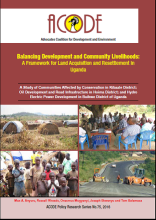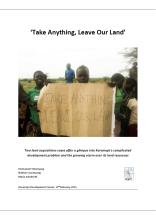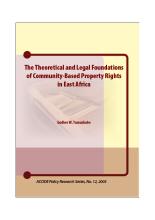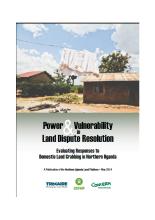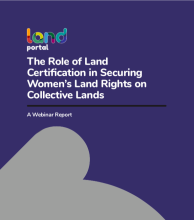/ library resources
Showing items 1 through 8 of 8.This issue of Land Reform, Land Settlement and Cooperatives includes interesting descriptions of land tenure and related policies in Uganda, Tunisia, the United Republic of Tanzania and Morocco.
Land acquisition for development projects by government, private investors and land speculators is a critical source of tensions and conflicts in many parts of Uganda.
The Karamoja region in Northeastern Uganda, covering an area of 27,200 square kilometers, is inhabited by around 1.2 million people who live in seven districts; Moroto, Nakapiripirit, Napak, Amudat, Abim, Kotido and Kaabong.
Indigenous, mobile, and local communities all over the world have for millennia played a critical role in conserving the earth’s patrimony.
The ways in which people obtain land in Uganda are changing fast. Land that used to be secured through inheritance, gifts or proof of long-term occupancy is now more commonly changing hands in the market.
Unfolding analysis reveals two types of land disputes prevalent in postwar northern Uganda: cases that involve a legitimate cause of action and those that do not.1 Since mediation and alternative forms of dispute resolution rely on parties’ willingness to negotiate in good faith, cases featuring
The global community is currently grappling with multiple and overlapping social and environmental threats. These include the climate emergency, COVID-19 and the threat of widespread hunger, and the accelerating loss of biodiversity.
Evidence shows that women can benefit from having individualised land rights formalized in their names. However, similar evidence is not available for formalization of land rights that are based on collective tenure.
Land Library Search
Through our robust search engine, you can search for any item of the over 73,000 highly curated resources in the Land Library.
If you would like to find an overview of what is possible, feel free to peruse the Search Guide.

